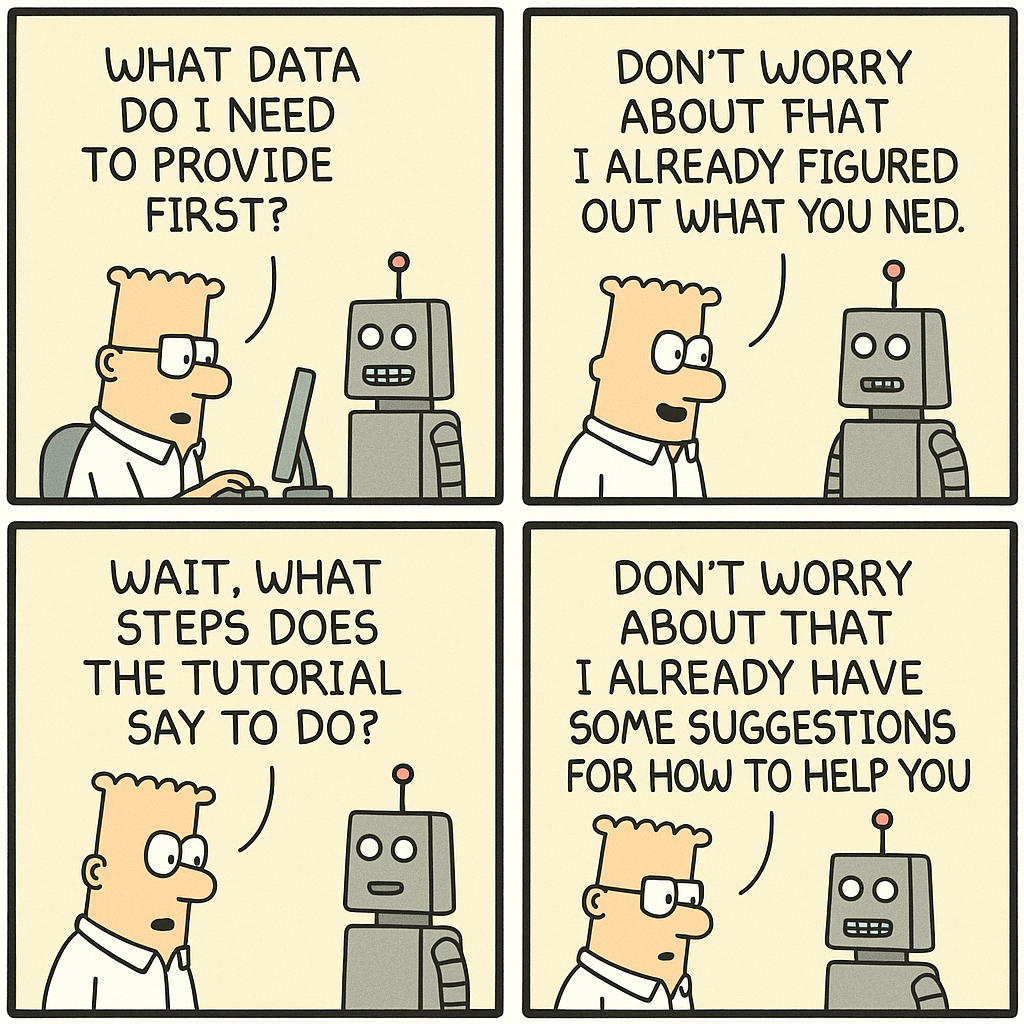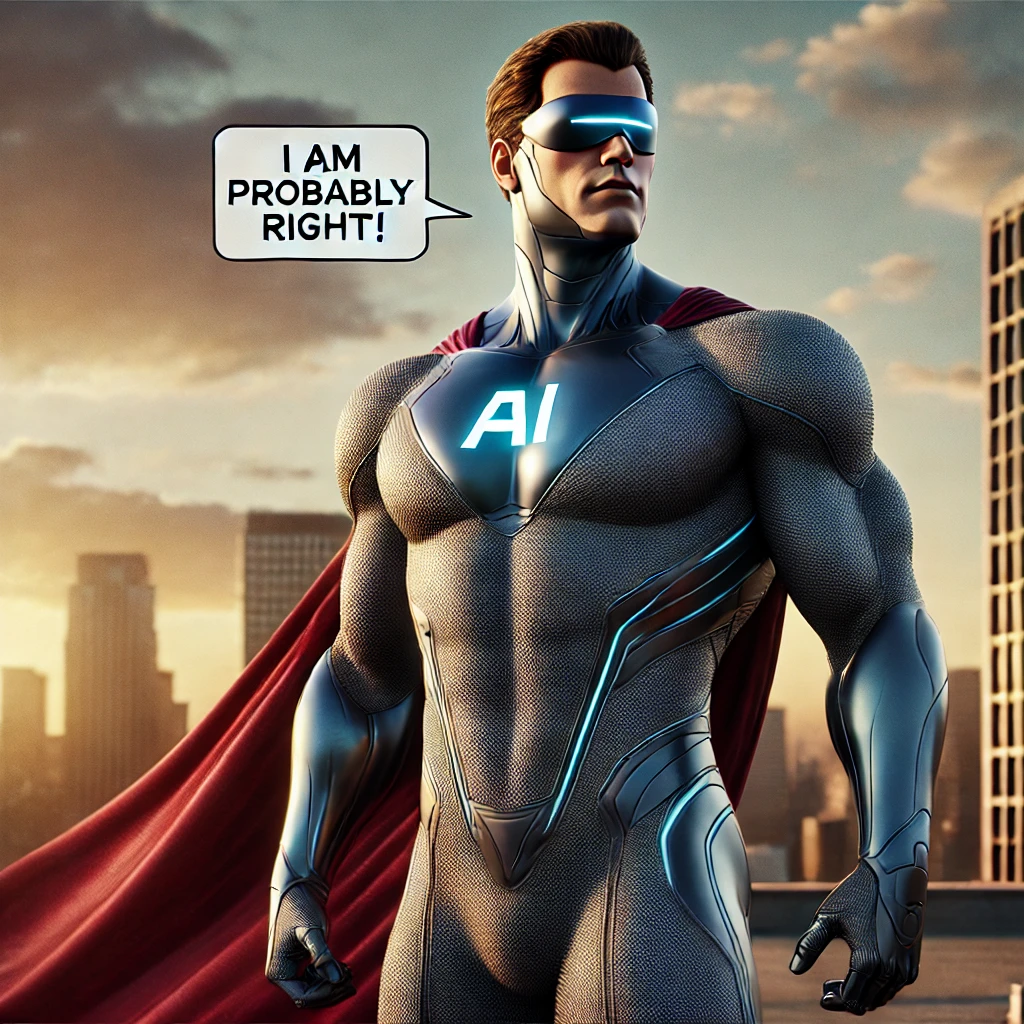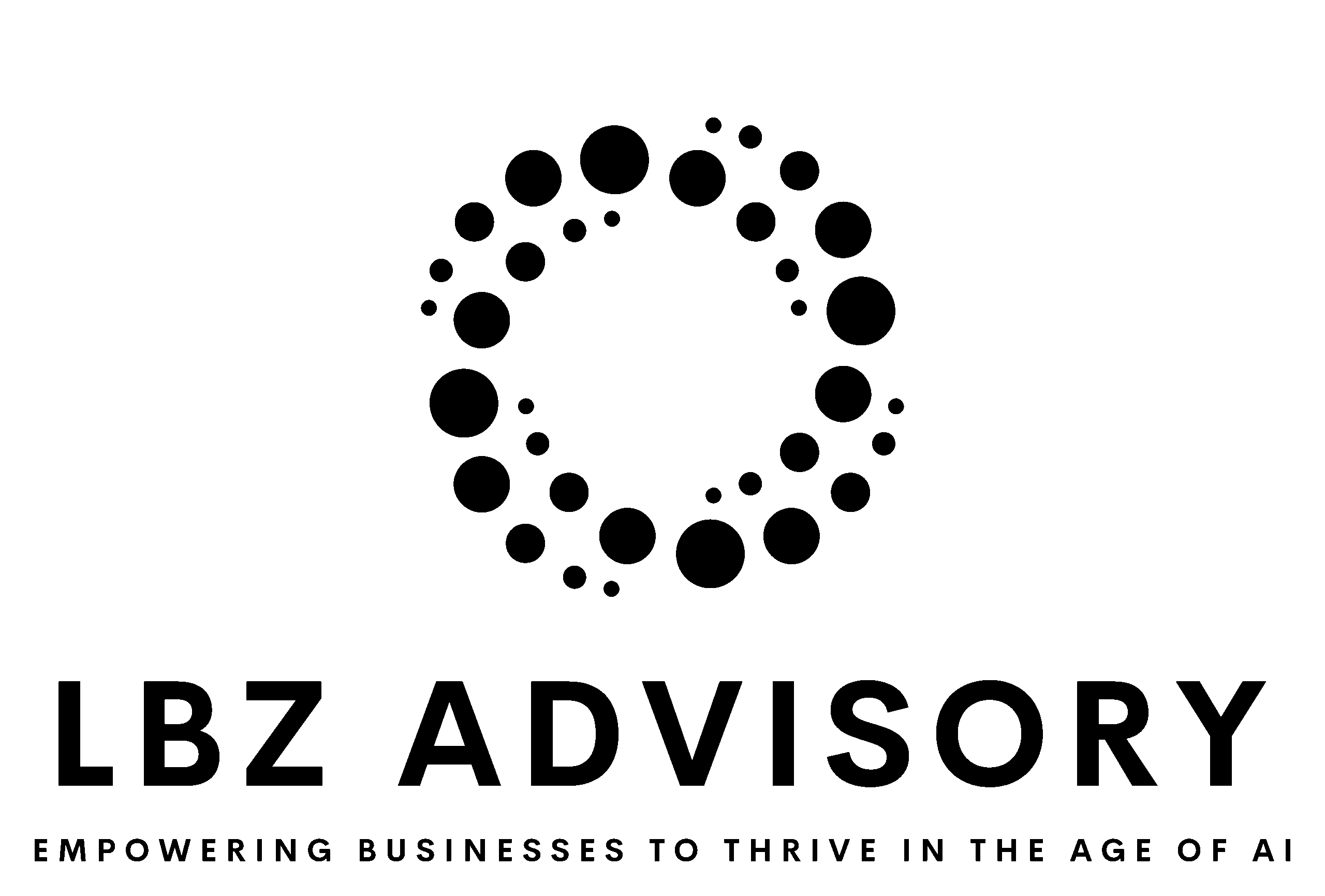Forget everything you thought you knew about product design. AI is tearing up the rulebook, and smart designers are already adapting.
THE OLD MAP IS OBSOLETE
Remember when we product designers had it all figured out? We were the masters of the user journey—carefully plotting every step from Awareness to Retention like ancient cartographers mapping trade routes.
We’d smugly sketch these linear paths on whiteboards: the user discovers our product, compares options, makes a purchase, follows our perfectly crafted onboarding sequence, and gradually ascends our learning curve. We built entire careers on optimizing each step of this predictable pilgrimage.
This approach is now dangerously outdated.
AI DOESN’T FOLLOW YOUR CAREFULLY PLOTTED PATH
The fundamental shift—the one sending tremors through decades of design thinking—is the collapse of linearity.
AI systems don’t force users through predetermined sequences. They don’t demand you master the basics before attempting advanced maneuvers. Instead, they observe, intuit, and adapt from your very first interaction.
Consider GitHub Copilot. A coding novice isn’t confined to tutorial purgatory—they simply start coding. The AI offers simple suggestions initially, but within hours, it’s recommending full functions tailored to their emerging style. Within days, it might propose architectural patterns specifically suited to their project.
The learning curve hasn’t just been shortened; it’s been fundamentally reshaped into a collaborative ascent. Value isn’t delayed; it’s immediate and compounds exponentially as the system learns about you.
THE VALUE EQUATION IS COMPLETELY DIFFERENT
The second massive disruption concerns how we package and monetize software.
For years, the SaaS playbook relied on feature rationing. Free tiers offered basic functionality behind velvet ropes. Pay a little more, unlock more discrete capabilities. Enterprise customers got the entire feature buffet.
AI-first products operate on a completely different model. Their value isn’t in enumerated features but in depth, nuance, and reasoning power.
Look at ChatGPT or Claude. The free tier offers the core capability—astonishing conversation abilities. What you pay for isn’t necessarily new actions but a more sophisticated intelligence: larger context windows, deeper understanding, faster processing. It’s less about unlocking new rooms in the mansion and more about enhancing the quality of conversation with an increasingly astute host.
Users upgrade not because they hit a feature wall, but because their own needs have become more sophisticated.
FEEDBACK AT THE SPEED OF THOUGHT
The traditional product improvement cycle was painfully slow: launch, gather metrics over months, analyze surveys, debate in planning meetings, tweak, redeploy.
AI introduces feedback loops that operate at conversation speed. An AI meeting assistant like Fathom doesn’t just provide transcriptions—it evolves with every interaction. It notices your team’s jargon, identifies topics you flag as important, and adapts its summaries to your preferences.
This isn’t just personalization; it’s co-evolution. The product is learning you, your team, and your context faster than any traditional development cycle could match.
THE NEW PRODUCT DESIGN PLAYBOOK
What does this mean for those of us building these experiences? Everything has changed:
1. From Journey Mapping to Problem Space UnderstandingStop obsessing over click paths. Start deeply understanding the user’s underlying intent and desired outcomes.
2. From Feature Design to Conversation DesignThe interface becomes less about buttons and more about facilitating a dialogue of intent and capability.
3. From Static Onboarding to Continuous CalibrationOnboarding isn’t a one-time tutorial but an ongoing process where the AI instantly assesses the user and the user continuously calibrates their understanding of the evolving AI.
4. From Feature Adoption to Outcome AchievementSuccess is measured not by which features are used but by whether problems are solved and objectives met.
5. From Feature Expansion to Context
ExpansionGrowth comes from enabling the AI to tackle a wider range of problems by deepening its understanding of the user’s unique environment.
DESIGNING FOR THE CONTINUOUS “AHA”
The celebrated “aha moment” of user delight when discovering a key feature is dissolving. In its place is a continuous state of unfolding—the quiet astonishment of a tool that seems to grow alongside you, understanding more, anticipating better, becoming less of a servant and more of a remarkably astute partner.
We’re stepping away from predictable, well-lit paths and into a landscape that redraws itself with every interaction. The map is alive, and it’s learning us as much as we are learning it.
The old beliefs—that users learn sequentially, discover features through exploration, and accrue value in lockstep with their learning—now seem touchingly naive.
TOWARDS ZERO-CLICK EXPERIENCE
With AI agents, the adaptive learning loop spins faster, becoming more proactive. The system isn’t just responding; it’s anticipating, suggesting next steps, sometimes executing entire multi-step workflows based on high-level objectives.
We’re witnessing the rise of “zero-click” experiences, where value is delivered proactively, without explicit user commands, based purely on learned context and anticipated needs.
THE NEW VALUE HIERARCHY
AI value can be segmented in three layers:
1. Foundation Layer (Often Free)Access to core intelligence and basic capabilities.
2. Depth/Performance Layer (Professional Tier)Enhanced reasoning, larger context windows, faster processing, more nuanced analysis.
3. Outcome/Agentic Layer (Enterprise/Advanced Tier)The ability to execute complex, multi-step tasks autonomously, integrate deeply across workflows, and leverage domain-specific data.
This hierarchy dissolves “feature FOMO.” Users upgrade not to unlock a specific button but because the complexity of their needs demands a more capable cognitive partner or autonomous delegate.
PRODUCTS THAT EVOLVE WITH USE
The product itself becomes a living entity. Consider an AI research assistant:
• Initially, it summarizes papers you provide.
• Soon, it recognizes patterns in your interests and preferred formats.
• Next, it adapts by suggesting related papers and highlighting sections relevant to your projects.
• Finally, it integrates into your workflow by monitoring new publications, drafting literature reviews, and even scheduling interviews with authors.
It’s not just adapting; it’s taking initiative, sometimes revealing emergent workflows that even its designers hadn’t planned.
THE DESIGNER’S NEW MANDATE
This necessitates profound shifts in product development:
• Design for conversations and objectives, not buttons and menus
• Build for explainability and control so users can understand and guide the system
• Measure success by outcomes achieved, not features adopted
• Expand context rather than just adding features
• Embrace continuous evolution as products are perpetually learning and updating
THE MAP IS DRAWING ITSELF
We’re moving beyond software as a static tool. We’re entering an age of software as an adaptive, increasingly autonomous partner. The lines blur between the user learning the system and the system learning the user.
The map is not only unfolding; it’s drawing itself, and us along with it.
Are you ready to navigate this new terrain?















